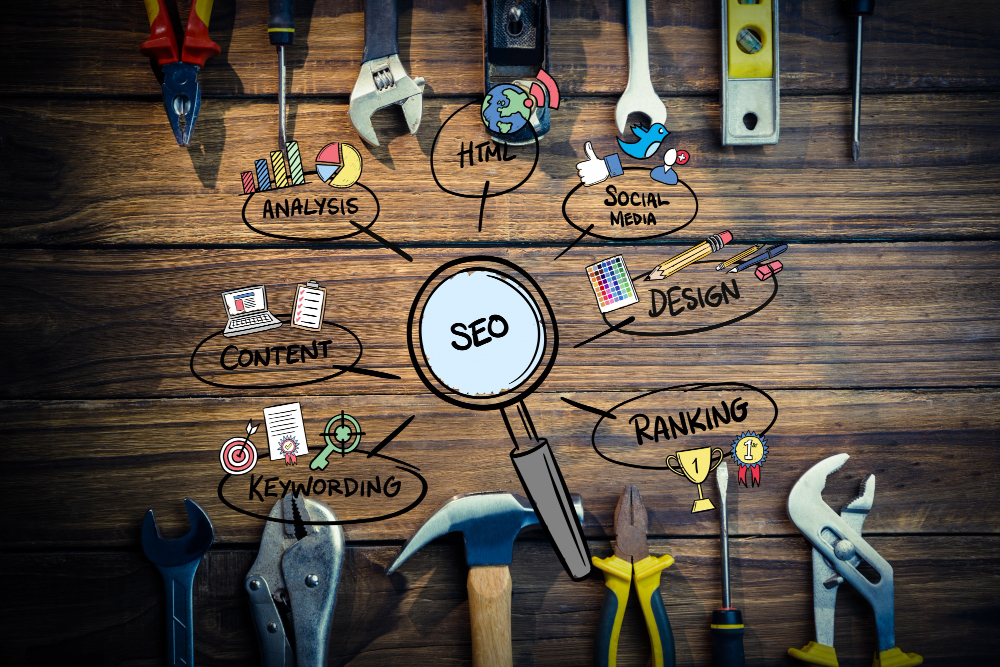I hope you enjoy reading this blog post.
If you want to get more traffic, Contact Us

Click Here - Free 30-Minute Strategy Session
Be quick! FREE spots are almost gone for this Month. Free Quote

On-page SEO refers to the process of optimising individual web pages to improve their visibility in search engine results and drive organic traffic. It encompasses both content and HTML source code elements that can be fine-tuned to make a page more search-engine-friendly. By aligning page elements with search engine algorithms, businesses can enhance their ranking potential and provide users with valuable and relevant content.
Key aspects of on-page SEO include optimising title tags, meta descriptions, headings, and internal linking structures. Effective on-page SEO also ensures faster site load speeds, mobile responsiveness, and high-quality, keyword-optimised content. Its importance lies in shaping user experience and improving discoverability, making it fundamental to successful search engine marketing strategies.

Click Here – Free 30-Minute Strategy Session
Be quick! FREE spots are almost gone for this Month
Keywords serve as the foundation for on-page SEO, connecting user search intent with relevant content. Strategically placing primary and secondary keywords throughout the page helps search engines understand the context and relevance of the material. These keywords should appear naturally within critical areas such as titles, headings, meta descriptions, and the body text. Over-optimisation, including keyword stuffing, can lead to penalties.
Key optimised areas include:
This balance enhances user experience while boosting search rankings.
Crafting SEO-optimised title tags is crucial for improving a page’s visibility on search engines. Title tags are HTML elements that define the title of a webpage and are displayed in search engine results. To make them effective, they should be concise, relevant, and incorporate target keywords naturally.
Search engines and users both rely heavily on title tags to understand a page’s content accurately.
Crafting compelling meta descriptions plays a crucial role in improving click-through rates (CTR) by influencing a user’s decision to visit a webpage. Meta descriptions should be concise, typically 150–160 characters, and include a strong call to action. They should summarise the page content while seamlessly integrating primary keywords, aligning with user intent to improve search engine visibility.
To optimise meta descriptions:
By meeting user expectations and standing out in search results, optimised meta descriptions can significantly boost CTR.
Header tags play a vital role in structuring web content and improving its readability for both search engines and visitors. The <h1> tag should be used for the main title of the page, providing a clear indication of the content’s primary focus. Subheadings such as <h2> and <h3> help to break the content into smaller, organised sections, improving user experience and engagement.
Search engines also rely on header tags to understand context and relevance.
Proper image optimisation significantly impacts on-page SEO and overall website usability. It involves crafting descriptive alt text, which ensures accessibility for visually impaired users and helps search engines comprehend image content. Clear, keyword-rich alt text also boosts search visibility for image-based queries.
File names play a critical role; they should accurately describe the image’s content using relevant keywords, separated by hyphens, to improve ranking potential. Generic names like IMG1234.jpg should be avoided.
Compression techniques reduce file sizes without compromising quality. Smaller images enhance page speed, improving user experience and contributing to better SEO rankings. Tools such as TinyPNG or ImageOptim are invaluable for efficient compression.
A well-optimised URL structure plays a critical role in improving on-page SEO and ensuring user-friendly navigation. URLs should be concise, descriptive, and free from unnecessary parameters or random strings. Including primary keywords in URLs helps search engines understand the page content and provides users with immediate context.
An effective URL structure ensures clarity for both users and search engines, improving click-through rates and rankings.
Internal linking is a critical on-page SEO tactic that aids search engines in understanding a website’s structure while improving user experience. Strategic placement of internal links ensures that link equity flows to high-priority pages, enhancing their chances of ranking. Anchor text should be descriptive and contextually relevant to signal a page’s content effectively. Building topic clusters by linking related pages can establish authority on a subject. Additionally, internal links can reduce bounce rates by guiding users to other valuable pages. Regular audits are essential to identify broken links and optimise opportunities to strengthen the internal linking framework.
Page load speed directly impacts user experience and search engine rankings, making it a crucial on-page SEO element. Websites that load quickly enhance usability, reduce bounce rates, and convey professionalism to visitors. Search engines, like Google, also prioritise fast-loading sites, as they aim to deliver the best experience to their users.
To improve load speed, website owners should:
Enhancing site speed benefits both SEO and user satisfaction, positioning websites for better performance across multiple metrics.
Mobile responsiveness plays a critical role in how search engines rank web pages. A responsive site adapts to different screen sizes, providing an optimal user experience on all devices. Google’s mobile-first indexing prioritises mobile usability, meaning non-responsive designs can negatively impact rankings.
Key impacts of mobile responsiveness on on-page SEO include:
Ensuring mobile responsiveness is essential for modern SEO strategies, supporting both usability and ranking success.
Creating content that balances user needs and search engine requirements is critical for on-page SEO. High-quality content should prioritise clarity, accuracy, and value, ensuring it addresses the audience’s intent. Search engines favour pages that effectively satisfy user queries while maintaining originality and uniqueness.
To optimise for quality and relevance:
A balanced approach enhances usability while improving rankings.
Schema markup, a form of structured data, allows search engines to better understand a webpage’s content. By integrating schema, webmasters can enhance the presentation of information in search results, often leading to rich snippets, such as star ratings, product availability, or event details. These visually appealing results can significantly increase click-through rates.
Key types of schema include:
Adopting schema markup ensures relevance, boosts search visibility, and provides users with accurate, concise information directly from the search page.
Monitoring on-page SEO performance requires leveraging reliable tools and metrics. Tools like Google Analytics and Google Search Console are invaluable for tracking organic traffic, user behaviour, and page indexing. SEO platforms such as SEMrush and Ahrefs provide insights into keyword ranking, site audits, and on-page improvements.
Key metrics to track include:
Consistently reviewing these metrics helps identify optimisation opportunities and refine strategies.
Effective on-page SEO requires optimising multiple elements to create a cohesive strategy that aligns with search engine algorithms and user intent. By focusing on factors like title tags, meta descriptions, headers, and keyword placement, each component plays a role in improving search visibility. Content relevance must remain a priority, supported by internal linking for navigational ease and search equity distribution. Moreover, addressing image optimisation and site performance enhances user experience. Combining these elements ensures a website not only meets technical requirements but also engages visitors. Success lies in attention to detail and consistent refinement to adapt to evolving SEO standards.

LEAVE A REPLY